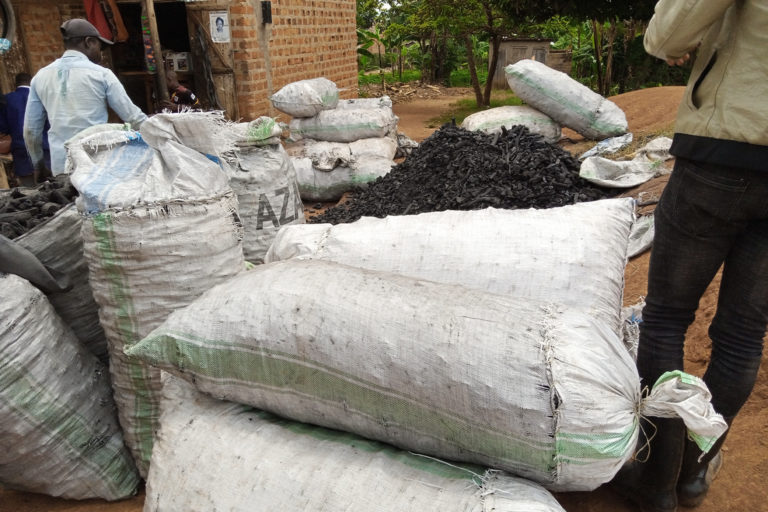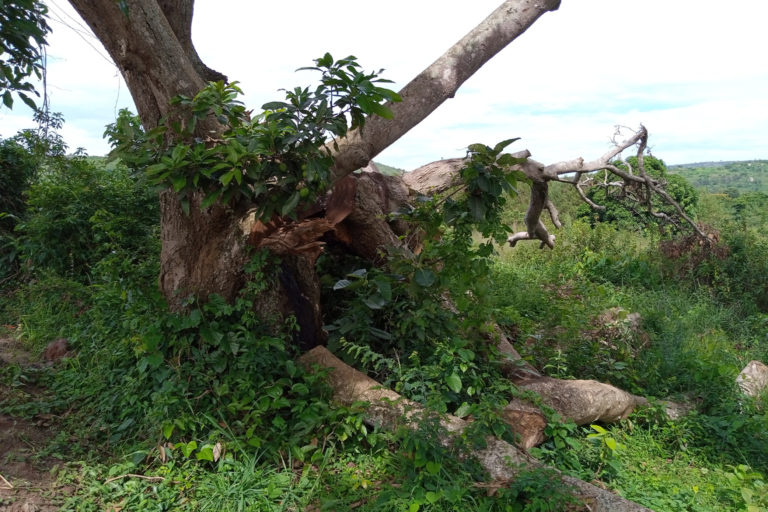by Alex Tumuhimbise on 17 June 2021
KAKUMIRO, Uganda — A strong desire by charcoal producers in Uganda to cash in on the soaring demand for charcoal for cooking, especially in urban areas, is resulting in environmental degradation on a large scale, threatening the health of both human and natural communities. Pressure is so intense on forests that food-providing fruit trees on private lands are being bought, cut down and burned to make the polluting wood sourced fuel.
According to a 2016-2017 Uganda National Household Survey summary, the country’s reliance on forest-produced fuels, including charcoal and dry wood, is huge, with 90% of households relying on various wood fuels for cooking. In urban areas, household charcoal use jumped 12.4% between 2012-13 and 2016-17. That consumption pattern — as urban charcoal use puts pressure on rural forests — is thought to be continuing today, according to the Uganda Bureau of Statistics.
This soaring call for charcoal has led charcoal makers, many of them operating without government-required licenses, and dealers to devour forests at a fast clip to keep pace with the lucrative business.
Joseph Muchombero, a resident of Kakindo in Uganda’s western Kakumiro district, some 210 kilometers (130 miles) west of Kampala, the nation’s capital, has long been in the charcoal production business. He educated all of his children, he says, with the money earned from the charred wood — what he calls “black diamonds.”
In the past, he produced charcoal by cutting trees in a nearby forest reserve, but that area has been completely degraded by human settlement, agriculture and cutting for fuel. Now, to source his product, he must resort to cutting fruit trees that grow on his own land in order to stay in the business.
“I have been in the charcoal industry for the last 20 years. I have only known charcoal production as my [sole] source of livelihood,” Muchombero says. “We used to get trees for charcoal production from a forest reserve, but the forests are no longer in place [there]. We now have to use fruit trees, like jackfruits and mangos, from our [own] land to remain in production. There is high demand for charcoal in Uganda and we have to meet that demand.”
To achieve his pressing production targets and serve his customers, Muchombero is now forced to go even further afield. “Because of forest degradation, I have to buy fruit trees of neighbors who want to meet their household needs. I pay them and cut the trees, like jackfruits, mangos and avocados,” he says. He then burns the fruit trees to make charcoal.
In a matter of minutes, a longstanding source of nutritious food is toppled and lost, with the wood made into briquettes and sold — threatening the rural community’s future food security and denying wildlife arboreal fruits.

A local, national and global problem
This steady and staggering loss of natural resources isn’t just a problem in Kakumiro district, or only in Uganda. Charcoal made from wood has been used as an energy source since ancient times. As of 2019, there were still 2.4 billion people globally who rely on fuelwood, including charcoal, for cooking at home or in small businesses.
That’s a major problem for the planet’s forests, while charcoal particulate air pollution is very bad for people’s health. Charcoal burning also contributes to global warming and helps threaten Earth’s climate stability. “It is estimated that traditional wood energy (fuelwood and charcoal) emits 1-2.4 Gt [gigatons] of carbon dioxide equivalent (CO2e) per year, which is 2-7 percent of total anthropogenic GHG [greenhouse gas] emissions,” says the U.N. Food and Agriculture Organization (FAO).
It adds that sub-Saharan Africa (SSA), of which Uganda is a part, “accounts for one-third of GHG emissions from wood energy.” Critically, charcoal will remain “an important source of energy in SSA by 2040, with increasing demand for cooking from urban areas.” That demand is likely due to population growth and lack of access to, and affordability of, electricity, according to a 2020 FAO report.
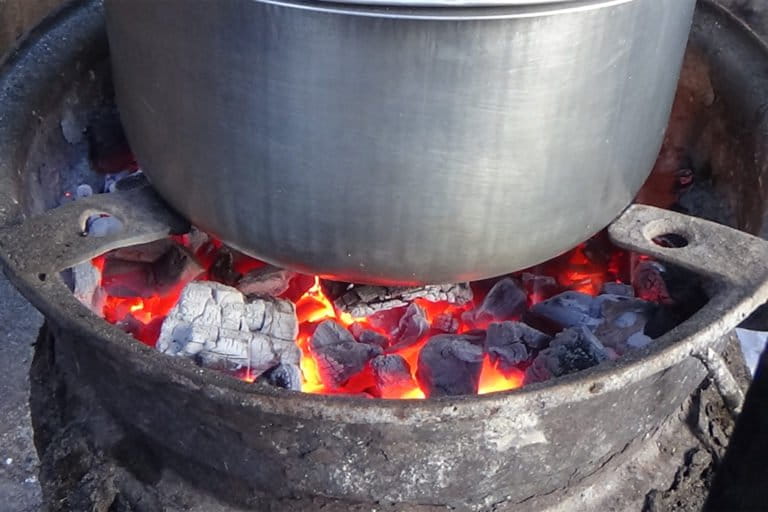

Uganda offers a good case study: According to the 2016-2017 Uganda National Household Survey, 80.8% of rural households used firewood for cooking, while just 15.5% used charcoal over that two-year period. But in urban areas, while just 22.3% relied on firewood to cook, 66.4% of urban households used charcoal. Also, though Uganda’s rural use of both firewood and charcoal fell between 2012-13 and 2016-17, urban use of charcoal for cooking surged over that period.
Based on more recent U.N. data, Ugandans using charcoal for cooking nationally accounted for roughly 23% of the country’s total population (down from 29.8% in 2016-17), but that still means some 10.7 million citizens in a country of 46.8 million rely on “black diamonds” to cook their meals.
“Charcoal is used mainly by the urban households for cooking. It is preferred since it is reliable, convenient, accessible and available at a stable price. Uncertainties surrounding the availability and high cost of liquefied petroleum gas have resulted in many urban households depending [more] on charcoal,” according to a 2019 assessment by the National Environment Management Authority of Uganda.
The charcoal trade is especially brisk and lucrative in Uganda’s cities. Gerald Mbuse is an urban Kampala charcoal dealer, in the business for more than five years. Though he needs to leave the city and camp in rural areas to source product, he still makes good earnings. He buys sacks of charcoal cheaply out in the countryside, which he then sells at triple the price back in the city.
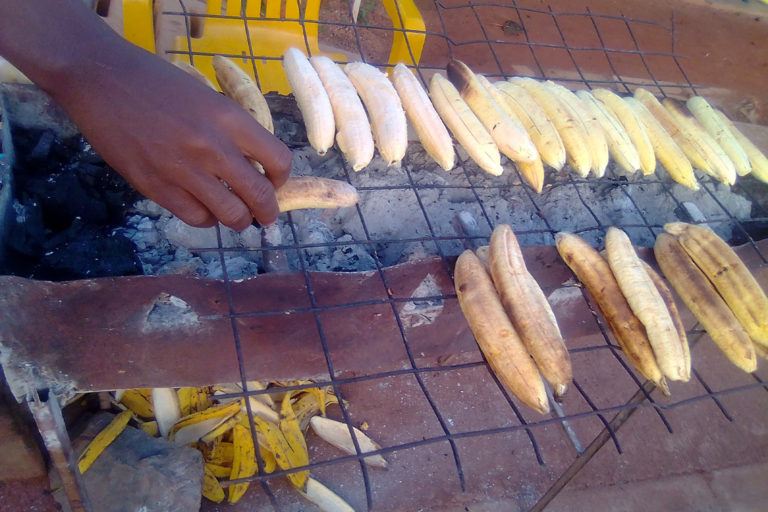
At a rural charcoal production site in Kakindo, Mbuse buys a single sack of charcoal for $8 (about 30,000 Ugandan shillings). He sells that same sack in downtown Kampala for $27 (100,000 shillings).
“[The] charcoal business is profitable but risky, because of forestry regulations from the government. I make profits more especially when I come to buy from local producers. I have to travel from district to district in order to fill [my] lorry” with charcoal, Mbuse explains. “The demand of charcoal is high in Kampala city slums because people can’t afford to cook using gas or electricity.”
Uganda’s charcoal business is well organized, with a supply chain that stretches from rural forest charcoal producers, to middlemen who move the goods, to retail sellers who operate in heavily populated urban districts. The business not only relies on small providers, who deal in sacks of charcoal, but on large-scale providers who move truckloads of charcoal from rural areas into Uganda’s cities.
The most depleted forest reserves are in the Albertine region in western Uganda, and include Kangombe, Bujogoro, Kinaka, Ruzaire, Muziizi, Nakuyazo and Guramwa, among others. The most impacted forest reserve, where charcoal production has resulted in the loss of an estimated 1 million forest trees, is at Kangombe in Kibaale district. The loss of these forests is devastating to the nation’s biodiversity — and ultimately to the charcoal industry itself which must look further afield to source trees.

Illegal charcoal production
According to Uganda’s National Forestry and Tree Planting Act of 2003, neither national nor local governments are allowed ownership of trees or have authority over forest production on private lands. However, that law also says that a district forest officer may issue directions to the owner of trees or forest produce situated on private property, requiring them to manage the resource in a professional and sustainable manner.
Additionally, all charcoal producers are required to have a charcoal production license, though many, and maybe most, producers in places like Kakumiro district lack licenses.
Christopher Baguma, the Kakumiro district natural resources conservation officer, admits to there are several illegal charcoal producers at work in the district who pose a great danger to the environment.
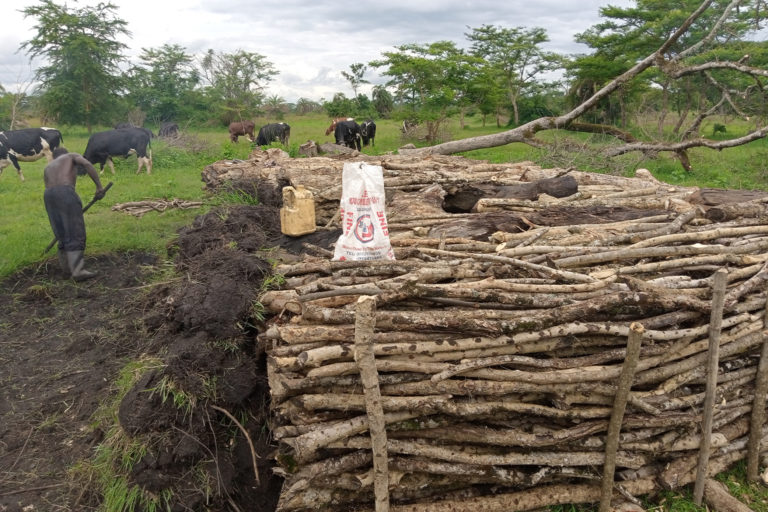
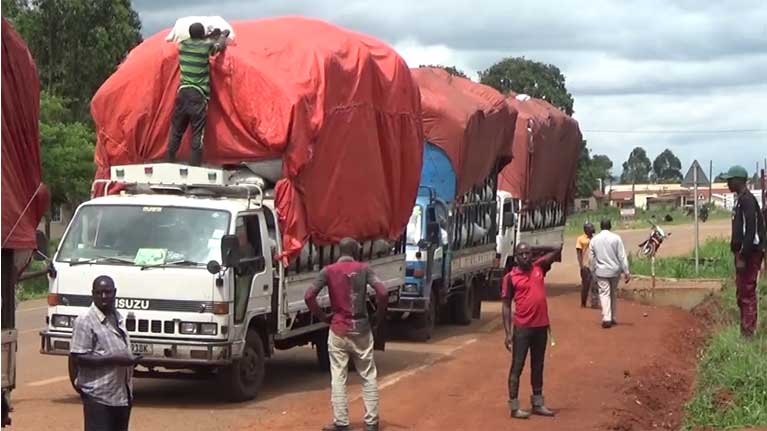
“It is true that we have illegal charcoal producers in the district who have gone ahead to deplete forest cover. They have moved from private forest plantations to government forest reserves like Kihayimira in Kasambya, and Guramwa, which was depleted completely,” Baguma says. “Charcoal burning is a forest activity which should be carried out by a person with a license. It is one of the activities that is depleting forest cover more especially when it is done in an irregular manner.” Law enforcement is happening, he adds. “We have been moving around, impounding materials and charcoal.”
Baguma says several tree species in the district are now on the verge of local extinction as a result of this illegal cutting and depletion.
“For charcoal production to continue, people should know the tree species which are favorable for the production. And these are: Albizia coriaria, Markhamia lutea and palm trees.”
According to the National Forestry Authority (NFA), more than 73,000 hectares (180,400 acres) of private forest are being cleared every year in Uganda, and more than 7,000 hectares (17,300 acres) of protected forest reserves are destroyed annually for timber and charcoal.
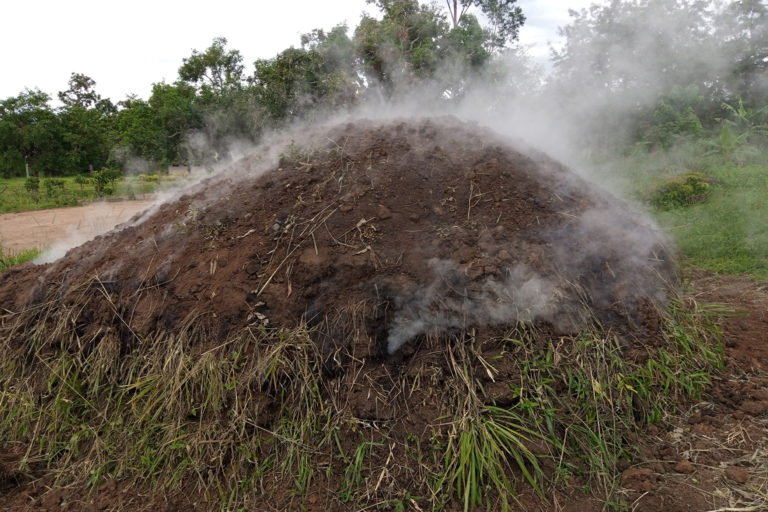
Food security at stake
Baguma says the recent assault on fruit trees to make charcoal is particularly serious, as it puts Ugandan food security and rural food production livelihoods at risk.
“Once the fruits are cut recklessly for charcoal, it poses a threat to the next generations because fruits are nutritious. Once they are depleted, it becomes a danger to the population,” he says, then adds: “Remember the fruit trees are also a source of income.”
Uganda, Baguma says, is literally burning up its sustainable food resources. Traditional charcoal making requires very large amounts of wood and involves the irreversible process of burning the wood. In addition to destroying trees, about 15-20% of charcoal made is lost during transport and storage.
Indiscriminate cutting of trees for commercial fuelwood production in Uganda has contributed significantly to the reduction of the total area covered by natural forests and woodlands, Baguma concludes.

According to a 2015 government national charcoal survey, districts in the nation’s Buganda region, a traditional Bantu Indigenous kingdom, are the leading producers of charcoal, making 40.9% of the nation’s total, followed by the northern region at 39.5%.
That survey also revealed that the central region districts were the main source of charcoal supplied to urban Kampala (63.4% of the city’s total). The leading supplier districts of charcoal in the central region near Kampala were Nakasongola, Nakaseke, Luwero and Kyakwanzi. Kampala is the nation’s leading charcoal market, and not surprisingly, this city of 1.5 million people suffers from significant air pollution, caused by transportation, industry, and the burning of charcoal and waste.
The survey also revealed that charcoal is the preferred fuel for heating and cooking in Uganda’s urban areas, both by households and commercial enterprises. The report added that the annual consumption of charcoal was about 400,000 tons, with 300,000 tons of that being consumed in Kampala. A portion of the charcoal produced in Uganda is also exported to neighboring countries, including Kenya.

Change not likely to come soon
Aidah Naziwa is among hundreds of food vendors in Kakumiro township. Like many thousands of street vendors across the nation, she uses charcoal to roast the meals — meat and sweet potato chips — that she sells to travelers and young low-income earners in her town.
Though Kakumiro township is connected to the national electricity grid, vendors like Naziwa can’t afford to use electricity in their daily subsistence businesses.
“Here we all use charcoal for roasting meat and also cooking some other foods for our customers,” she explains. “We cannot afford using gas or electricity because our income is very low.”
Expense isn’t the only barrier to change. In 2018, just 42.65% of Ugandans had access to electricity, according to the World Bank. Until street vendors and other small-scale commercial businesses, along with urban and rural households, see their incomes and access to electricity increase, there is certain to be a continuing need for charcoal and other woody fuels, and that’s a worrisome trend for Uganda’s future and the future of the world’s climate.
